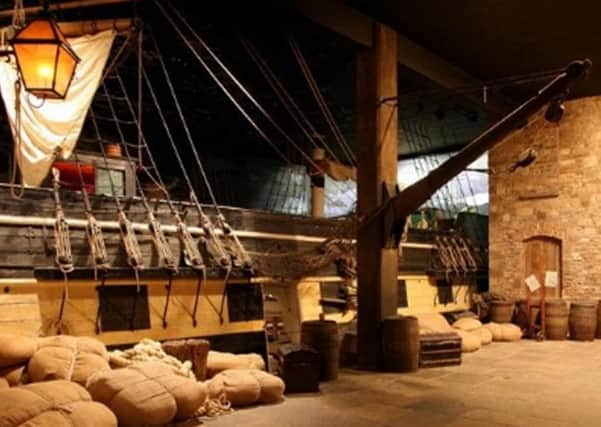The man who left Derry and wenton to found a '˜Steel City' empire


You might not have heard of him but Thomas emigrated with his family from Derry, aged 5, in 1818.
And in 1882, aged 69, Thomas returned to Ireland to visit the family farm, his relatives and Derry, having made it big in the United States.
Advertisement
Hide AdAdvertisement
Hide AdThomas’ success was built on by his offspring in the ‘Keystone’ state who managed to build up one of the biggest fortunes in North America by the early 19th century.
In fact, by 1936, the Mellons were one of the four wealthiest families in the United States - along with the Rockefellers, DuPonts and Fords.
The entrepreneur and banker, opened his law office in Pittsburgh, Pennsylvania in 1839 and his first bank in 1870.
Thomas Mellon begins his autobiography with: “I was born in 1813, on the 3rd of February, at the Camp Hill cottage on my father’s farm, Lower Castletown, parish of Cappagh, county Tyrone, Ireland.”
Advertisement
Hide AdAdvertisement
Hide AdThis cottage is today the focal point of the Ulster American Folk Park.
Lying in the dock in the Ulster American Folk Park is a reconstruction of an early nineteenth century ‘brig’ modelled on the Brig Union which carried older members of the Mellon family from Derry to Baltimore in 1816, two years before Thomas Mellon and his parents emigrated.
On day of departure from Derry, in 1818, Thomas Mellon’s family were prevented from boarding by the ship’s surgeon owing to Thomas’ father, Andrew, contracting ‘a high fever.’
Thomas’ mother searched for and ‘found two suitable upstairs rooms which she engaged as lodging rooms’ near to Bishops Gate.
Advertisement
Hide AdAdvertisement
Hide AdIt was four weeks later before Andrew Mellon recovered and the family embarked on a ship belonging to a Mr Buchanan who ‘was the uncle of the late President of the United States’, destined for Saint John, New Brunswick.
The voyage to Saint John took ‘a trifle over twelve weeks’ and then a further two weeks was spent on a coasting ship which took them to Baltimore, and from there to their final destination, in a journey lasting three weeks, by Conestoga wagon to a still largely unpopulated Westmoreland County, 21 miles east of Pittsburgh. In his old age, in 1882, Thomas Mellon made a sentimental journey to Ireland; his trip by steamship, departing New York, took only 9 days arriving at Queenstown (now Cobh) on White Star Line steamer Celtic on 21 August 1882.
On his way to Derry, by train, he visited: the family farm at Camphill, which he had departed, age 5, 64 years before.
Thomas paid a visit to “Upper Castletown, where I had a view of the old stone dwelling supposed to have been erected by my great ancestor, Archibald Mellon, after his arrival from Scotland”, in the mid-17th century.
Advertisement
Hide AdAdvertisement
Hide AdHe also took in Cross Roads Presbyterian Church “where my ancestors had worshipped for many generations” and visited his cousin, Samuel Wauchob at Kinkit, 2 miles west of Victoria Bridge.
“As the train passed down from Victoria Bridge to Derry on the west side of the Strule, I could see the road on the east side by which we went to Derry on our way to America; and when in sight of Derry I could see the bridge over which we crossed from the east side of the river into the city on that occasion,” he recalled.
On arrival in Derry, on Monday 28 August 1882, and after lunch in Jury’s Hotel on Foyle Street he “set out for the old walled town of historical celebrity. I knew the direction to find Bishops gate in the city wall near which we had lodged long ago”.
He visited St Columb’s Cathedral and from “the balcony of the steeple I had a splendid view of the city inside and outside the walls”.
Advertisement
Hide AdAdvertisement
Hide Ad“But I had now seen all I cared to see of Derry; indeed, all I cared to see of Ireland. I had seen again the places and people near and dear to me as old friends, around whom my early memories clustered. All else were unrelated to me, and strangers: so at three o’clock I was again on the train for Belfast”, to connect with the steamer to Glasgow.
Thomas founded the T. Mellon & Sons’ Bank in 1869.
In 1902 the bank became the Mellon National Bank and was a major financier in the ‘Steel City’ and in the Mid West throughout much of the last century.
The Mellon group eventually merged with the Bank of New York ten years ago and now trades as BNY Mellon, with $29.9 trillion assests under custody and/or administration across over 100 markets.
Thomas’ son Andrew W. Mellon, who with his brother, Richard B. Mellon, ran Mellon in the early days, served as 49th Secretary of the Treasury under US Presidents Warren G. Harding, Calvin Coolidge and Herbert Hoover.
Advertisement
Hide AdAdvertisement
Hide AdAndrew also shared the distinction of serving as the US’s man in London with the likes of John Adams, Frank Kellogg and William Averell Harriman.
He served as United States Ambassador to the United Kingdom under Herbert Hoover.